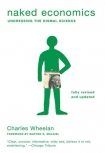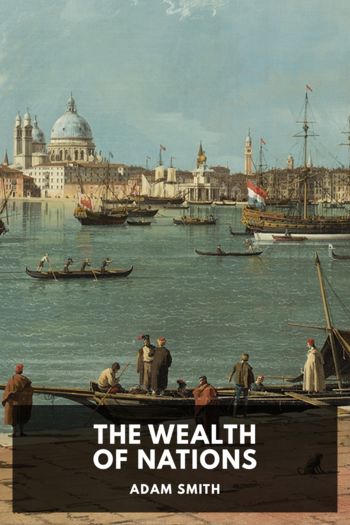Naked Economics, Wheelan, Charles [open ebook .txt] 📗

Book online «Naked Economics, Wheelan, Charles [open ebook .txt] 📗». Author Wheelan, Charles
Beginning with the first glimmers of trouble in 2007, the Fed used all its conventional tools aggressively, cutting the target federal funds rate seven times between September 2007 and April 2008. When that began to feel like pushing on a wet noodle, the Fed started to do things that one recent economic paper described as “not in the current textbook descriptions of monetary policy.” The Fed is America’s “lender of last resort,” making it responsible for the smooth functioning of the financial system, particularly when that system is at risk of seizing up for lack of credit and liquidity. In that capacity, the Fed is vested with awesome powers. Article 13(3) of the Federal Reserve Act gives the Fed authority to make loans “to any individual, partnership, or corporation provided that the borrower is unable to obtain credit from a banking institution.” Ben Bernanke can create $500 and loan it to your grandmother to fix the roof, if the local bank has said no and he decides that it might do some good for the rest of us.
Bernanke and crew pulled out the monetary policy equivalent of duct tape. The Federal Reserve urged commercial banks to borrow directly from the Fed via the discount window, gave banks the ability to borrow anonymously (so that it would not send signals of weakness to the market), and offered longer term loans. The Fed also loaned funds directly to an investment bank (Bear Stearns) for the first time ever; when Bear Stearns ultimately faced insolvency, the Fed loaned JPMorgan Chase $30 billion to take over Bear Stearns, sparing the market from the chaos that later followed the Lehman bankruptcy. In cases where institutions already had access to Fed capital, the rules for collateral were changed so that the borrowers could pledge illiquid assets like mortgage-backed securities—meaning that when grandma asked for her $500 loan, she could pledge all that stuff in the attic as collateral, even if it was not obvious who would want to buy it or at what price. That gets money to your grandma to fix the roof, which was the point of all this.7
Monetary policy is tricky business. Done right, it facilitates economic growth and cushions the economy from shocks that might otherwise wreak havoc. Done wrong, it can cause pain and misery. Is it possible that all the recent unconventional actions at the Federal Reserve have merely set the stage for another set of problems? Absolutely. It’s more likely, at least based on evidence so far, that the Fed averted a more serious crisis and spared a great deal of human suffering as a result. President Barack Obama appointed Federal Reserve chairman Ben Bernanke to a second four-year term beginning in 2010. At the ceremony, the president said, “As an expert on the causes of the Great Depression, I’m sure Ben never imagined that he would be part of a team responsible for preventing another. But because of his background, his temperament, his courage, and his creativity, that’s exactly what he has helped to achieve.”8 That’s high praise. For now, it seems largely accurate.
CHAPTER 11
International Economics:
How did a nice country like Iceland go bust?
In 1992, George Soros made nearly $1 billion in a single day for the investment funds he managed. Most people need several weeks to make a billion dollars, or even a month. Soros made his billion on a single day in October by making a huge bet on the future value of the British pound relative to other currencies. He was right, making him arguably the most famous “currency speculator” ever.
How did he do it? In 1992, Britain was part of the European Exchange Rate Mechanism, or ERM. This agreement was designed to manage large fluctuations in the exchange rates between European nations. Firms found it more difficult to do business across the continent when they could not predict what the future exchange rates would likely be among Europe’s multiple currencies. (A single currency, the euro, would come roughly a decade later.) The ERM created targets for the exchange rates among the participating countries. Each government was obligated to pursue policies that kept its currency trading on international currency markets within a narrow band around this target. For example, the British pound was pegged to 2.95 German marks and could not fall below a floor of 2.778 marks.
Britain was in the midst of a recession, and its currency was falling in value as international investors sold the pound and looked for more profitable opportunities elsewhere in the world. Currencies are no different than any other good; the exchange rate, or the “price” of one currency relative to another, is determined by supply relative to demand. As the demand for pounds fell, so did the value of the pound on currency markets. The British government vowed that it would “defend the pound” to keep it from falling below its designated value in the ERM. Soros didn’t believe it—and that was what motivated his big bet.
The British government had two tools for propping up the value of the pound in the face of market pressure pushing it down: (1) The government could use its reserves of other foreign currencies to buy pounds—directly boosting demand for the currency; or (2) the government could use monetary policy to raise real interest rates, which, all else equal, makes British bonds (and the pounds necessary to buy them) more lucrative to global investors and attracts capital (or keeps it from leaving).
But the Brits had problems. The government had already spent huge sums of money buying pounds; the Bank of England (the British central bank) risked squandering additional foreign currency reserves to no better effect. Raising interest rates was not an attractive option for the government either. The British economy was in





Comments (0)